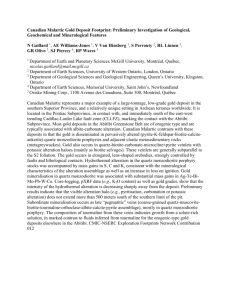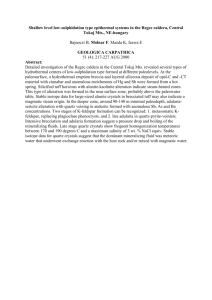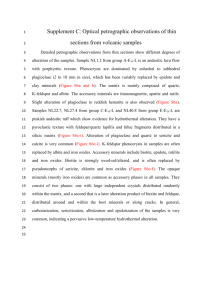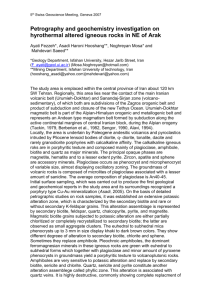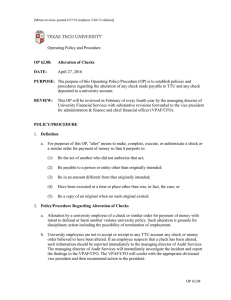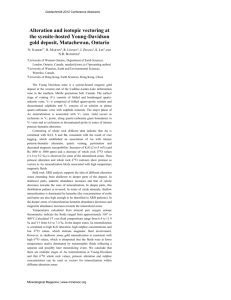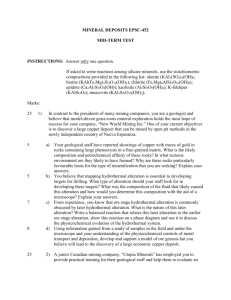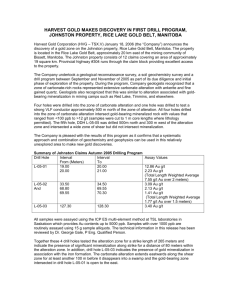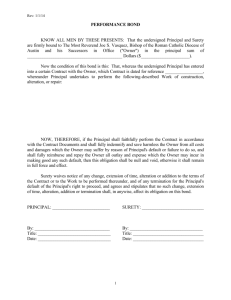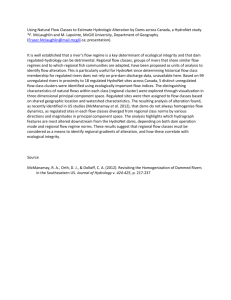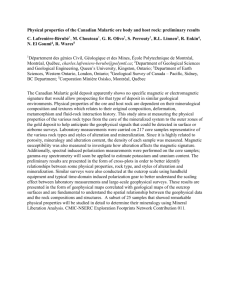N Gaillard 1, AE Williams-Jones 1, S Salvi 2, D Beziat 2, JR
advertisement
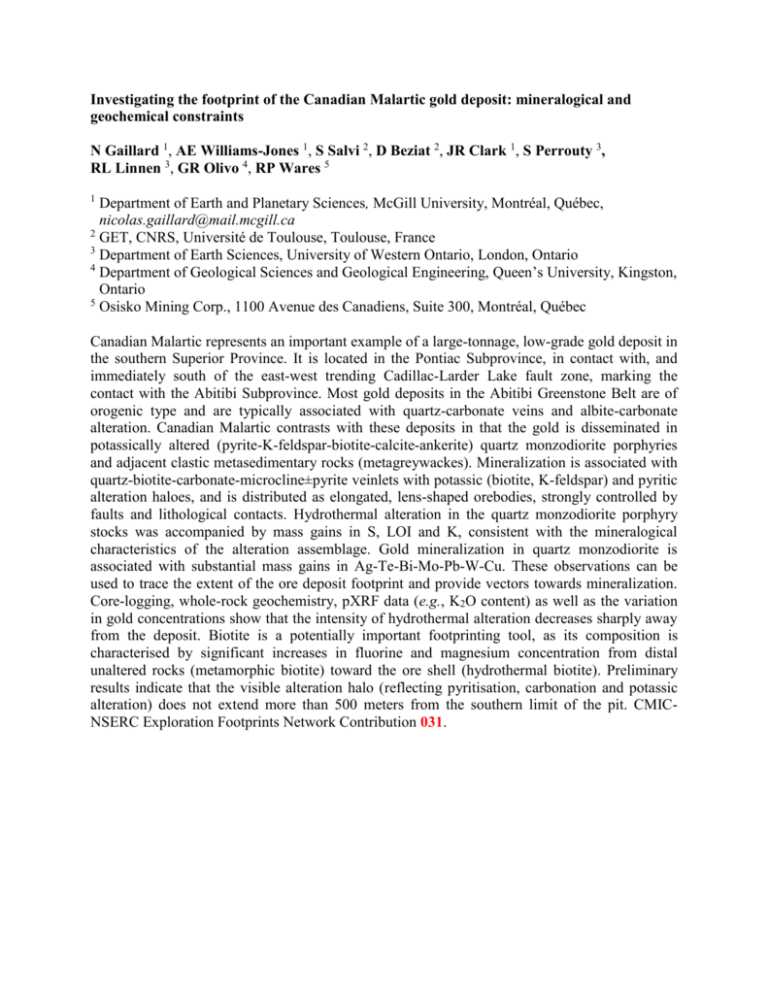
Investigating the footprint of the Canadian Malartic gold deposit: mineralogical and geochemical constraints N Gaillard 1, AE Williams-Jones 1, S Salvi 2, D Beziat 2, JR Clark 1, S Perrouty 3, RL Linnen 3, GR Olivo 4, RP Wares 5 1 Department of Earth and Planetary Sciences, McGill University, Montréal, Québec, nicolas.gaillard@mail.mcgill.ca 2 GET, CNRS, Université de Toulouse, Toulouse, France 3 Department of Earth Sciences, University of Western Ontario, London, Ontario 4 Department of Geological Sciences and Geological Engineering, Queen’s University, Kingston, Ontario 5 Osisko Mining Corp., 1100 Avenue des Canadiens, Suite 300, Montréal, Québec Canadian Malartic represents an important example of a large-tonnage, low-grade gold deposit in the southern Superior Province. It is located in the Pontiac Subprovince, in contact with, and immediately south of the east-west trending Cadillac-Larder Lake fault zone, marking the contact with the Abitibi Subprovince. Most gold deposits in the Abitibi Greenstone Belt are of orogenic type and are typically associated with quartz-carbonate veins and albite-carbonate alteration. Canadian Malartic contrasts with these deposits in that the gold is disseminated in potassically altered (pyrite-K-feldspar-biotite-calcite-ankerite) quartz monzodiorite porphyries and adjacent clastic metasedimentary rocks (metagreywackes). Mineralization is associated with quartz-biotite-carbonate-microcline±pyrite veinlets with potassic (biotite, K-feldspar) and pyritic alteration haloes, and is distributed as elongated, lens-shaped orebodies, strongly controlled by faults and lithological contacts. Hydrothermal alteration in the quartz monzodiorite porphyry stocks was accompanied by mass gains in S, LOI and K, consistent with the mineralogical characteristics of the alteration assemblage. Gold mineralization in quartz monzodiorite is associated with substantial mass gains in Ag-Te-Bi-Mo-Pb-W-Cu. These observations can be used to trace the extent of the ore deposit footprint and provide vectors towards mineralization. Core-logging, whole-rock geochemistry, pXRF data (e.g., K2O content) as well as the variation in gold concentrations show that the intensity of hydrothermal alteration decreases sharply away from the deposit. Biotite is a potentially important footprinting tool, as its composition is characterised by significant increases in fluorine and magnesium concentration from distal unaltered rocks (metamorphic biotite) toward the ore shell (hydrothermal biotite). Preliminary results indicate that the visible alteration halo (reflecting pyritisation, carbonation and potassic alteration) does not extend more than 500 meters from the southern limit of the pit. CMICNSERC Exploration Footprints Network Contribution 031.
